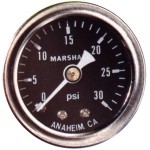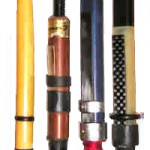4 More Simple Checks for Better Bagpipe Blowing
 Much talk, discussion, heartache, and pipe band judge scribbling is spent over the simple issue of “blowing.” Many pipe majors and band pipers will complain that it is their band’s single biggest weakness when it comes to performance on the competition circle.
Much talk, discussion, heartache, and pipe band judge scribbling is spent over the simple issue of “blowing.” Many pipe majors and band pipers will complain that it is their band’s single biggest weakness when it comes to performance on the competition circle.
Good blowing is not just a term for steady playing, but all the elements that go into that steadiness as well. It comes down to mechanics. And not unlike playing a good 6/8 march, it is a skill influenced by many factors.
Have you read the first “4 Simple Checks…?” Check out the first part of this post “4 Simple Checks for Better Bagpipe Blowing.” There, I examine four easy checks and fixes for a better bagpipe fit and comfort. A comfortable stance and natural posture while playing will go a long way toward helping you achieve steady blowing on your bagpipe.
But that is only the beginning. What about the instrument itself? General air efficiency of your bagpipe is probably the most obvious, but most ignored facet of the instrument. The bagpipe is a contained system and certain conditions must be met for that system to run optimally. Regular checks on the airtightness of that system is essential.
Here are four more checks as you work toward steady blowing:
- Bag. Your bag is the right size for you if you’ve read through the first “4 checks,” but does it hold air? This is a topic that has been covered here before. Make sure your bag is completely airtight. Place rubber stoppers in all stock openings except the blowstick. Fill your bag with air and wait fifteen seconds. Blow into your blowstick again. Can you fill the bag slightly? If you can, then there is leakage somewhere. Diagnose and fix it.
- Hemp. All the joints on your instrument should be freshly hemped and snug. You may think your joints are hemped properly, but you will be surprised what a regular changing of the wraps can do for air efficiency—even on something like the tuning pins of your drones. Rewrap any hemped joint that is showing signs of wear. This could be dryness or a “dirty” appearance, or a “shine” on the hemp that is telling you that the wrap is crushed completely and no longer effective. If you find yourself having to add strands occasionally for a better seal, that is a sure bet you need to rewrap. Take the time to do a through and complete job.
- Chanter reed. Your chanter reed should not be too hard (or too easy) for you to play. Spend the time to find or work in a reed that is comfortable for you to play. What does that mean? A comfortable reed can be blown fully by mouth—out of the chanter—when you are blowing your hardest. A reed whose sound collapses at full blowing is going to be too easy for your strength level. Reeds that possess all the right characteristics you’re looking for but yet take too much effort for you to blow even before you place it in your chanter will never vibrate fully enough to reach their optimum pitch. Be aware of your own strength limit and work within it.
- Drone reeds. Make sure your drone reeds are set to a good balanced strength in line with your chanter reed and your comfort level. Whether you’re dealing with synthetic constructed reeds or natural cane, you will need to the skills to set them properly. Each of your reeds should be taking the least amount of air possible—and in equal measure—in relation to your chanter reed. In other words, your drones should be calibrated to your chanter reed strength. Andrew Douglas has an excellent list of tips and simple process for calibrating your drones over at Dojo University.
 Pipehacker
Pipehacker








Pingback: Chanter Reed Strength—Finding the Sweetspot :()